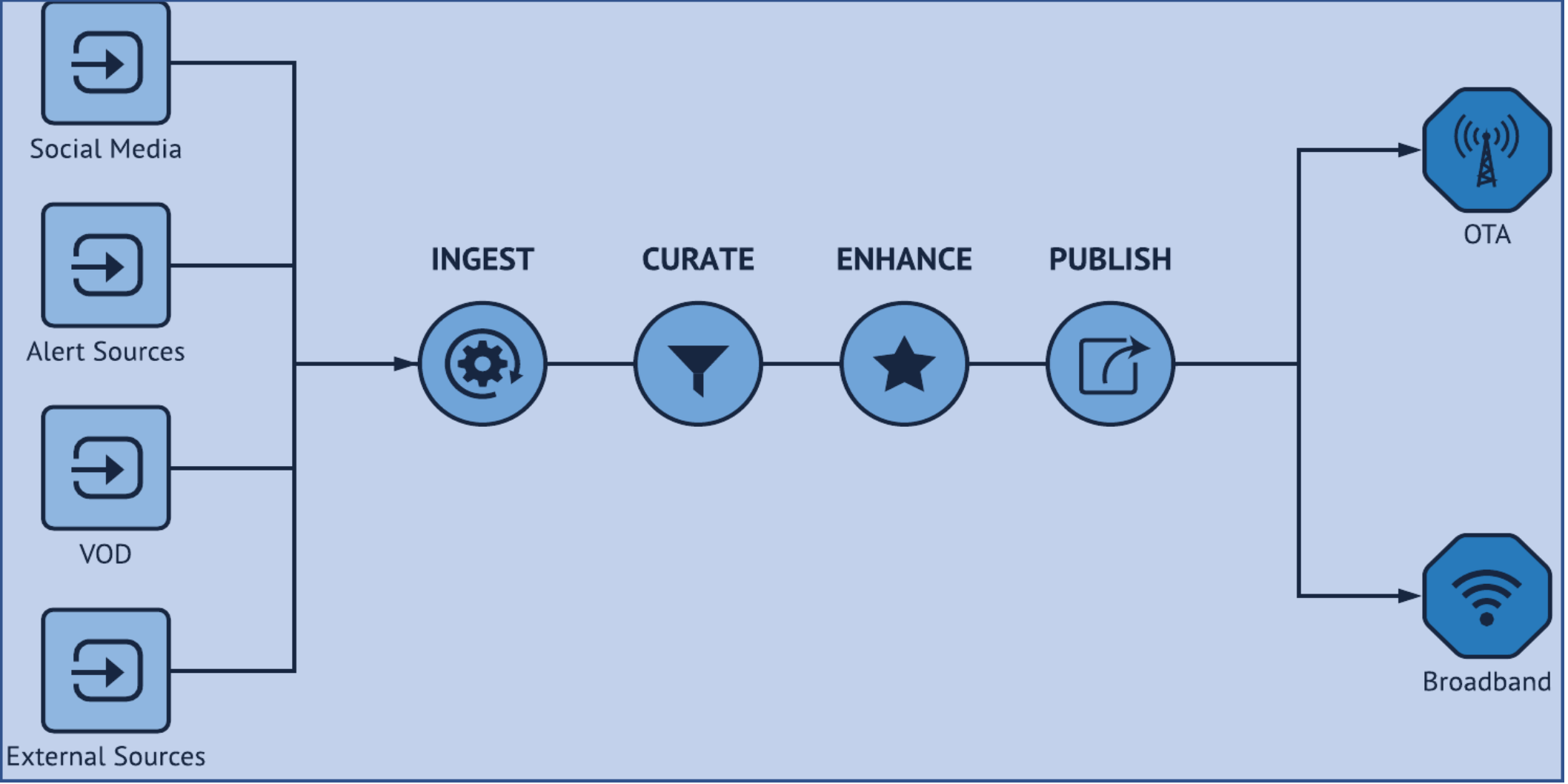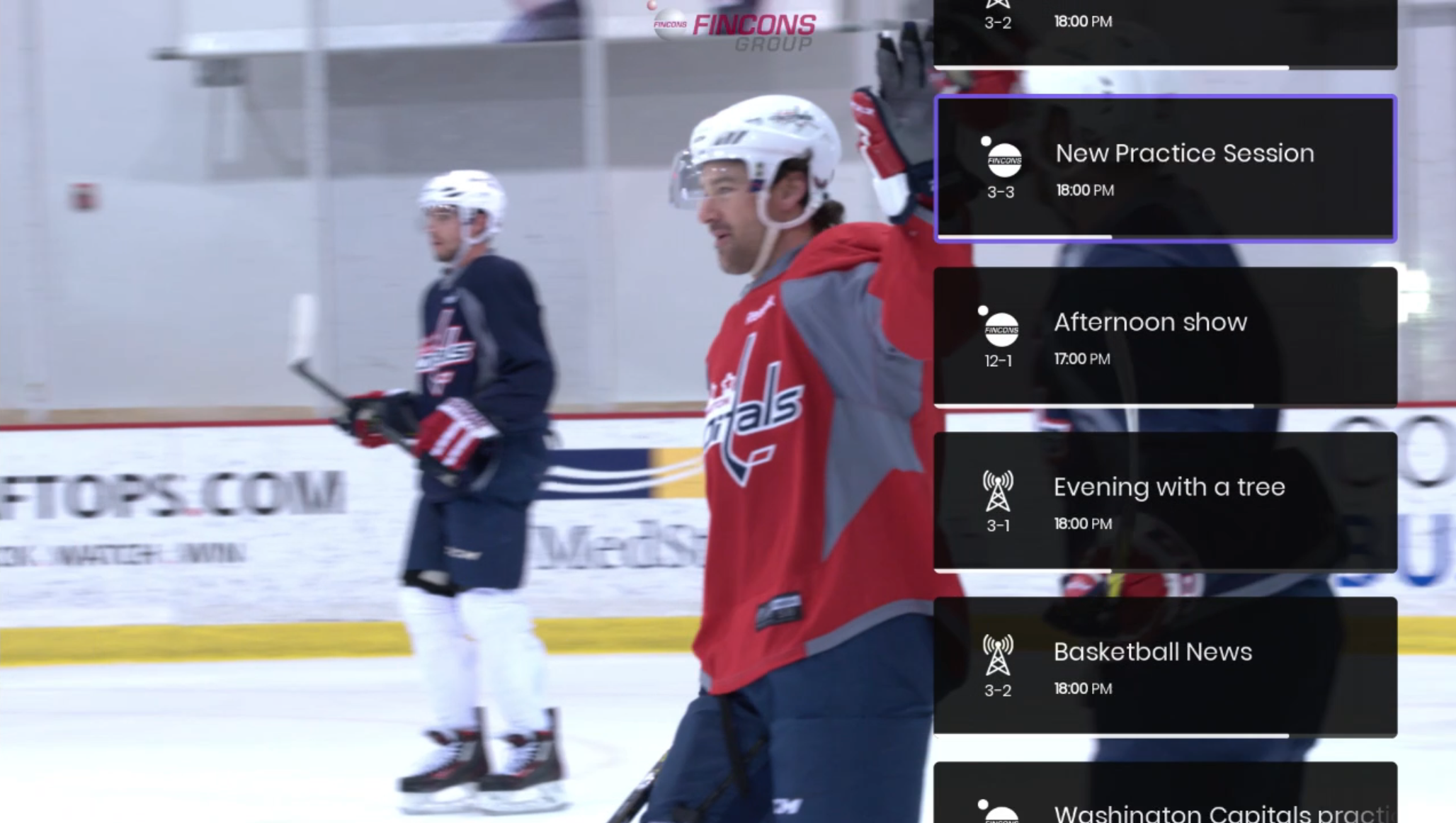Next Gen TV (or ATSC 3) was designed to be flexible, extensible and future-proof with a plethora of new capabilities, including 4K, HDR and immersive audio. But what is exciting to me is the middleware environment, since ATSC 3 was developed from the ground up as a hybrid standard with a middleware environment based on HTML5. This middleware enables broadcasters to enhance their services with applications to create a more engaging viewing experience. In this blog we explore the benefits of augmenting existing broadcast workflow to take full advantage of ATSC 3.
Let us consider a conventional broadcast workflow as shown in Figure 1.

Figure 1 – Workflow without augmentation
With Next Gen TV, broadcasters will have an opportunity to dramatically enhance their programming with the full power of HTML5. This means they can pull in images, change the display layout, bring in relevant clips from other sources and enable user interaction via broadcast applications. Broadcast applications are web-based applications written to the Next Gen TV standard that enables them to run on any Next Gen TV compliant receiver. However, today’s web development tools are designed for computer programmers and are not suitable for television producers and editors. The good news is that there are companies (examples include OpenZnet, Triveni Digital and Fincons Group) that are now developing drag-and-drop tools specifically for Next Gen TV. These tools would allow broadcasters to easily create applications for Next Gen TV without requiring deep coding experience by developers.
Now, consider the example in Figure 2 below.

Figure 2 – Program enhanced with quick guide
This is a sample “quick guide” that allows viewers a look at what programs are coming up on the current channel. This is typically designed to be triggered by pushing a single button on the remote control such as the up-arrow key. This “quick guide” is one example of enhancements that can be produced by broadcasters. Other applications could include things like “tell-me-more” content, voting/polls, play-along gaming, additional stats and scores on screen, weather data, and so on. Given that Next Gen TV grants broadcasters full access to the power of HTML5, the possibilities are virtually limitless.
Many broadcasters already have significant expertise with HTML5 and other web technology in their digital groups. Collaboration between the TV and digital groups and augmenting workflow with the right development tools should allow for broadcasters to take full advantage of Next Gen TV.

